Black Friday 2025 has landed at Analogue Wonderland, bringing some of our biggest film photography deals of the year - from discounted film and cameras to money-saving WonderLab processing offers, exclusive bundles, and festive specials available for a limited time only. Grab a great deal while stocks last!
Recent posts
Shop the article
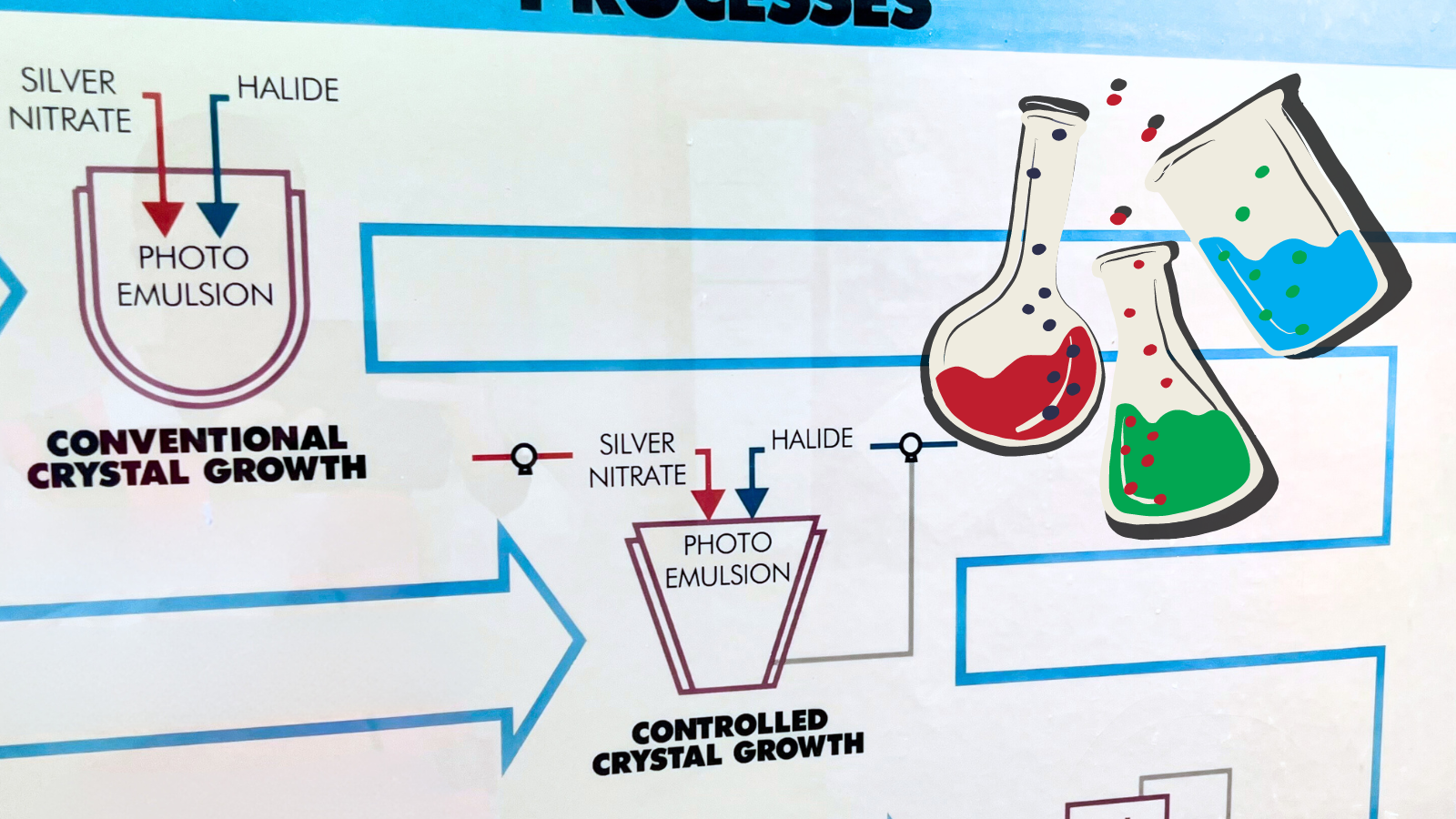
Is 35mm Still Made? and other common questions
By Paul McKay
This article will cover some simple questions about 35mm film, to help you get started on your film photography journey! Is 35mm Film Still Made? Yes! 35mm is still made and is by far the most popular film format that we sell. 35mm is still made by a few of the big dogs in film such as Kodak and Ilford as well as lots of lovely indie brands such as Film Washi, Dubblefilm and Candido.
Where is 35mm Film still available?
You may be lucky enough to live next to a Lomography Embassy Store or local photography shop that stocks film, but if not then good news- you are already in the best place to find it! At Analogue Wonderland we carry an extensive range of 35mm film to suit all your creative needs. We have more details on where to buy 35mm film below - with ideas for different regions of the world - but the key message is not to panic, there’s lots of choice!
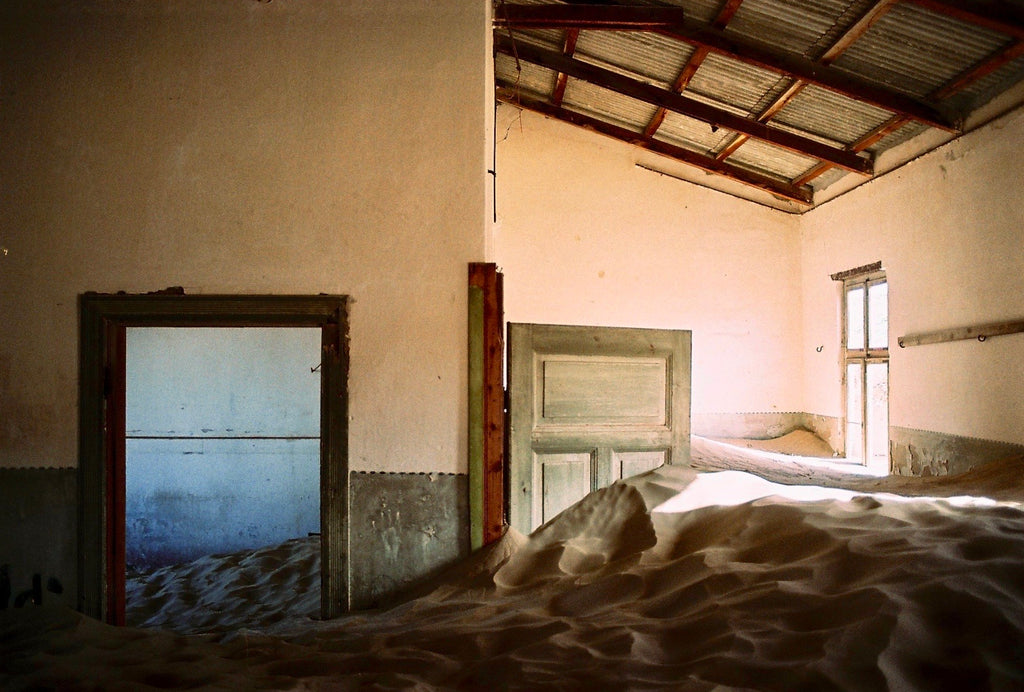
Most of my favourite photos over the past ten years have been shot on 35mm film - like this one from Namibia's skeleton coast. Love the way Portra brings the vintage feel to the colour - admittedly golden hour in a desert is pretty special light! (c) Paul McKay
Where can I buy 35mm film?
Film is not dead! And there are more places where you can buy 35mm than you may think, whether that be in store or online. You may be lucky enough to live near an independent film photography shop. In London, The Photographer’s Gallery has a great little gift shop inside selling a variety of film and wonderful photography books. There is also the Camera Museum near Tottenham Court Road which you should visit anyway because the cameras they have on display are dreamy, and they sell some film and other merchandise there too.
Lomography still has a few of their Lomography Embassy stores dotted around Europe; these are incredible treasure troves of all things Lomo and definitely worth a visit to learn more about Lomography’s history and pick up some Lomo film!
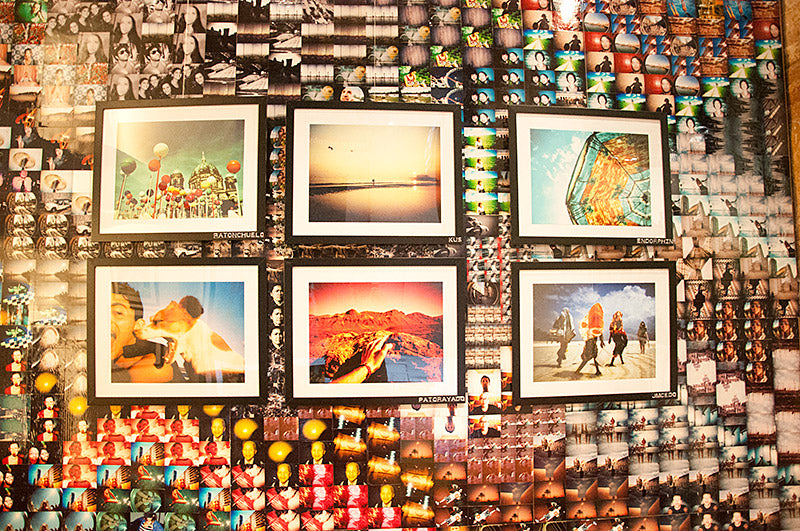
One of the famous LomoWalls in Barcelona
You can also buy 35mm film online, how modern! Who sells 35mm film? There are lots of internet avenues you can explore to find your 35mm of choice. If you live in North America then you could check out the Film Photography Store - run by Mike Raso who also heads up one of the best and longest-running analogue photography podcasts (the Film Photography Podcast). In Australia we hear wonderful things about FilmNeverDie. In Asia we know - and love - the team behind Camera Film Photo.
And of course here in Europe you can buy your film from Analogue Wonderland! We stock more than 120 different 35mm films, offer letterbox friendly packaging, tracked shipping and you will be supporting an independent family business.
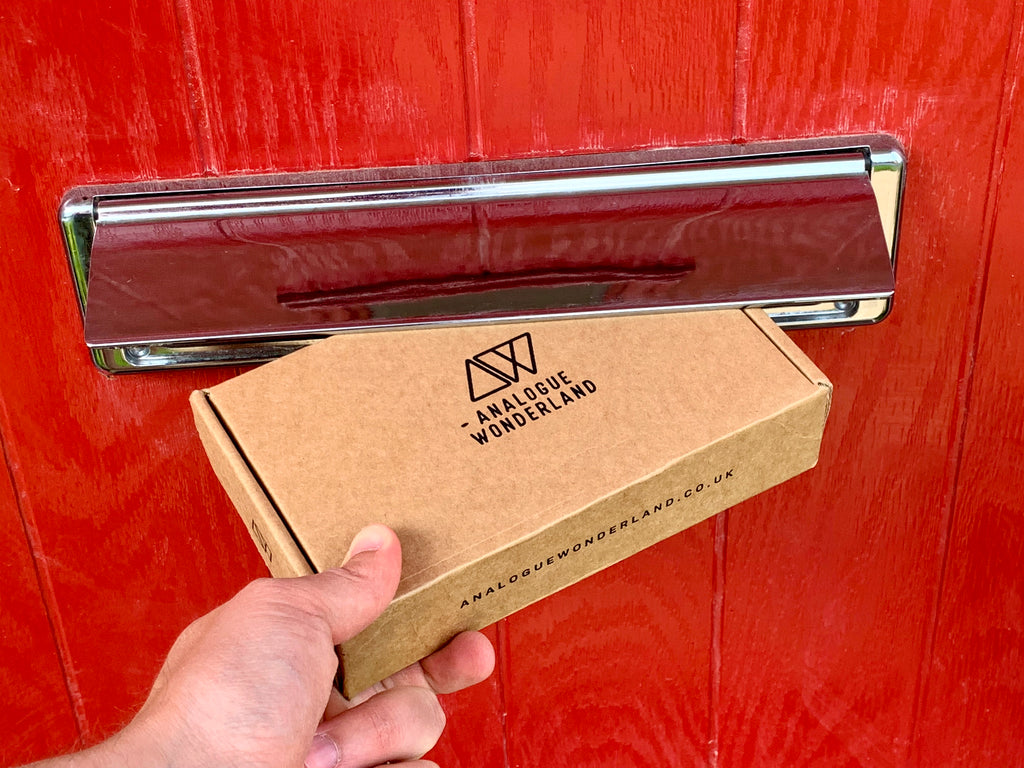
If you are looking for expired film you could try Expired Film Club, this is a brilliant online store started by our friend Miles! Expired film can give your images a really cool, grungy feel to them with super grainy shots. The results can be unpredictable but it is always fun to experiment!
You could also head over to Amazon or eBay - but be warned. Unless you recognise and trust the seller, then please be careful. There are many folks out there who will try to sell you film that has been stored badly, is over-priced, or is past its expiry date. So before you buy please make sure you’ve asked about its background!
When in doubt - head to any of the reputable dealers from within the community.
How is 35mm made?
Photographic film is a strip or sheet (a strip in the case of 35mm) of transparent film base. The base is normally made of an acetate or plastic material and is coated on one side with a gelatin emulsion. This emulsion contains teeny-tiny light sensitive silver halide crystals, that when exposed to light capture an image, which is then brought out through another chemical process later on *Wonderlab has entered the chat*
So how is 35mm made? Photographic film is built up in multiple layers. Firstly the emulsion layer is made by dissolving pure silver in nitric acid to form silver nitrate crystals. These are mixed with other chemicals to form silver halide grains. This is the magical layer of the film that helps us achieve beautiful exposures.

Above is a diagram that explains the layers that make up colour negative film and below a black and white negative film like (Kodak Tri-X). The layers may vary depending on the specific emulsion, but this is the 'foundation' recipe of negative film bases.

In order for the layer of silver halide crystals to stick to the plastic film backing, it is suspended in gelatin. This creates a smooth, even layer of the silver halide crystals. Unfortunately a vegan alternative hasn’t yet been found for this part of the process. However there are some brilliant minds in the film community doing lots of research into how we can make film photography more sustainable, such as Ed Carr from Northern Sustainable Darkroom who has written a thesis on the topic. To find out more about the use of gelatin in film read our Is Eco-friendly Film Photography Possible? Article.
The gelatin emulsion layer is applied to the plastic film base with a coating machine. First the coating head and gelatin need to warm up in order to create a smooth layer of emulsion, safe lights are turned on and the coating process begins. The first step involves drawing all of the emulsion into a steel syringe that is part of an infusion pump (a peristaltic pump to be more specific), a tube is attached from this pump to the coating head, which fills up with emulsion. Once the line has been filled the infusion pump is switched on and starts pushing the emulsion to the coating head. Once a bead has formed between the head and the film base the roller is switched on and the machine starts to coat the film.
The next stage is to allow the film to dry, which takes about an hour. It is then ready to be sliced down to size and run through a perforator machine which punches the sprocket holes into the film. The film is then loaded into 35mm canisters and ready for your favourite 35mm camera to go out and take some beautiful photographs!
The process will of course vary in scale depending on whether you are in a big Kodak factory for example, or in the awesome workshop of Lomig, the creators of Film Washi (one of the smaller indie brands we sell!)
If you would like to watch this process being done check out the video above, where a historian at the George Eastman museum walks us through the coating process.
Can 35mm film be exposed to light?
The only time your 35mm should be exposed to light is when you are taking your photograph. Photographic film is extremely sensitive and any accidental exposure can lead to blank negatives and therefore no photographs.
So please don’t pull the film out of the canister - any more than is necessary to load the film in your camera - before or after shooting it!
Why is it called 35mm film?
35mm film got its name because the entire width of the film (including the area with sprockets) measures 35mm! This is also called the film’s ‘gauge’.
The actual dimension of the image that you’ll capture (excluding sprockets) is 36mm wide by 24mm high. The similarity of the 36mm image width and the 35mm film gauge can often be confusing so here’s a simple diagram:

The format was developed and produced first at an experimental scale in Thomas A Edison’s lab in New Jersey. William Kennedy Laurie Dickson, an employee of Edison’s sliced 70mm Kodak film in half and spliced the ends together to create the format. The term 135 was introduced by Kodak in 1934 to distinguish 35mm that was specifically used for still photography versus movie film, so you may often see it described as 135 film. The 135 number does NOT correspond to any of the film’s measurements
The format quickly grew in popularity, soon surpassing 120 by the late 1960s to become the most popular film format despite competition from other film formats that were invented over the period such as 828, 126, 110 and even APS film. It remains the most popular selling film today!
How many photos are on 35mm film?
The most common number of photos on 35mm film is 36. This is what is known as a '36 exposure' roll of film. The other common exposure number is 24.
Some films are sold with the option of 36 or 24 exposures - so that photographers can choose whether they'd rather have the extra frames, or save a bit of money and go for 24.
When manufacturers produce rolls of film they will often allow for some extra film length, in case of loading mistakes or cameras winding-on too fast. So in reality you may frequently get 35, 36 or even 37 shots on a single roll of '36 exposure' film!
Also note that if you shoot half-frame then you'll get double these numbers on a single roll.
Why is 35mm film so popular?
There are many reasons as to why 35mm film is the most popular format of choice: it is a very user friendly format, takes the most amount of exposures and comes in a wide variety of styles, colours and aesthetics to choose from. We've actually written a full article on the topic: Why Shoot 35mm Film?
The format and physicality of 35mm film makes it very popular. The small metal canister it comes in makes it very user friendly, the canister contains the film and minimises the risk of light leaks or accidental exposure. It is small, compact and much simpler to load and unload than other film formats such as 120 or large format film.

35mm Film Cameras tend to be small and portable too - like my Yashica T4!
35mm film also gives you the most bang for your buck! 35mm is available in 24 or 36 exposure rolls (and sometimes you can even squeeze a few extra shots out of it). This means you can get up to 36 photographs or more, so although the resolution isn’t as high as larger format films, you can get the most photographs from it. This makes it an ideal entry film for new film photographers as it gives you the most flexibility to learn and make mistakes in a more cost effective way. If you shoot in half-frame (like the rumoured upcoming Pentax film camera) then the cost is reduced even more!
The huge selection of 35mm film available also makes it a very popular format. It comes in the widest variety of options from black and white, colour, redscale, infrared, to crazy special effects and experimental films. 35mm film is seen as the most ‘consumer’ format, used by beginners and hobbyists whereas other film formats such as 120 and large format are seen as more ‘professional’ film types because of the higher resolution they offer (and perhaps the price point).
Of course this generalisation isn’t perfect. Many professional photographers have created stellar careers with 35mm film - particularly street photographers where the smaller format and lighter cameras is a clear benefit - and equally many beginners find themselves shooting 120 or large format very happily!
Can 35mm film still be developed?
Yes, 35mm can still be developed- through magical chemical processes using processing machines, or in some cases by hand in developing tanks we can still enjoy the thrills of film photography!
You need to find a photo lab or business that offers 'film developing' or 'film processing' with the option of 35mm film.
Where can 35mm film be developed?
Finding 35mm film to buy and finding places to develop your 35mm is a similar story. There are a few highstreet labs left such as Snappy Snaps and Max Spielmann but a lot of the big developing chains have either shut down or dramatically reduced their branches. You may find a branch (even some supermarket chains) that offer film developing but in reality they usually send off your films and do this process out of house, so the turnaround time can be 2-3 weeks.
So if you’re looking for someone who develops 35mm film in the UK - with a fantastic team of passionate technicians and award-winning customer service - then we would of course recommend the Analogue WonderLab! We manage the whole process in-house, and have great relationships with all our suppliers so will always have the best advice on how to develop and scan your films.
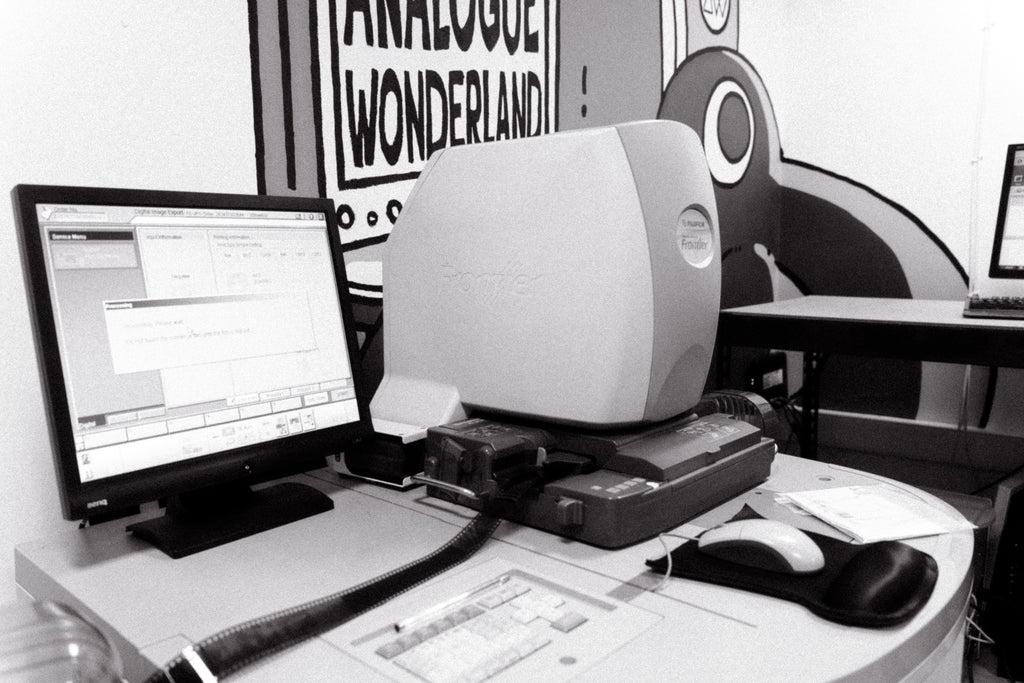
A photo of one of Analogue Wonderland's 35mm film scanners...scanned on this very machine!
You could also check locally to see if there’s a small independent lab in your town or city, and go see them for a chat. Not only will you get to meet some fellow passionate analogue photographers, but you’ll also get a feel for their services and equipment, and you may find that somewhere close to drop-off/pick-up works best for your workflow.
If you’re not in the UK then there is a wonderful network of independent labs around the world who will treat your film with the right level of care - Ilford maintain a great database that you can find here.
Can 35mm film be converted to digital?
Yes, 35mm film can be converted to digital! After your 35mm film is developed there are multiple ways to digitise it. At the WonderLab we use a Fuji Frontier scanner, this machine can be fed whole rolls of film at a time. It works by taking quick digital photos of each frame, which are then edited and colour corrected on photoshop as part of the next stage.
There are also flatbed scanners, for this technique your film is placed flat onto a scanner in a frame to hold it in place. This method is great for films that have been shot at irregular frame sizes, or if you want to include sprockets within your image as it allows you to select the precise area to scan (whereas the Fuji Frontier is restricted to standard frame sizes).
Another method to convert your film photos to digital images is to take a digital photograph of them! This is a more modern technique that has become popular recently, using negative holders such as the Pixl-latr device, you place your negatives on top of a light source and use a digital camera to take a photo of them ,which you can later invert and edit on your computer to reveal your film photograph!
We hope that has answered some of your common questions about 35mm film! It really is a wonderful choice to get you started on your analogue adventures.
35mm film has the widest variety of emulsions to choose from, offers the most exposures of any film format and is a brilliant, compact film option for beginners and professionals alike.
You can see our full range of 35mm film here, and if you have any more questions please get in touch via phone or live chat! HAPPY SHOOTING!
Ready to dive in?
Keep Reading
View all
Christmas 2025: Shipping & Opening Hours
Christmas 2025 is fast approaching! To make sure your analogue goodies arrive in time, take note of our last shipping dates, plus opening and operating hours over the festive season. We've got everything you need to gift the magic of film photography this Christmas!
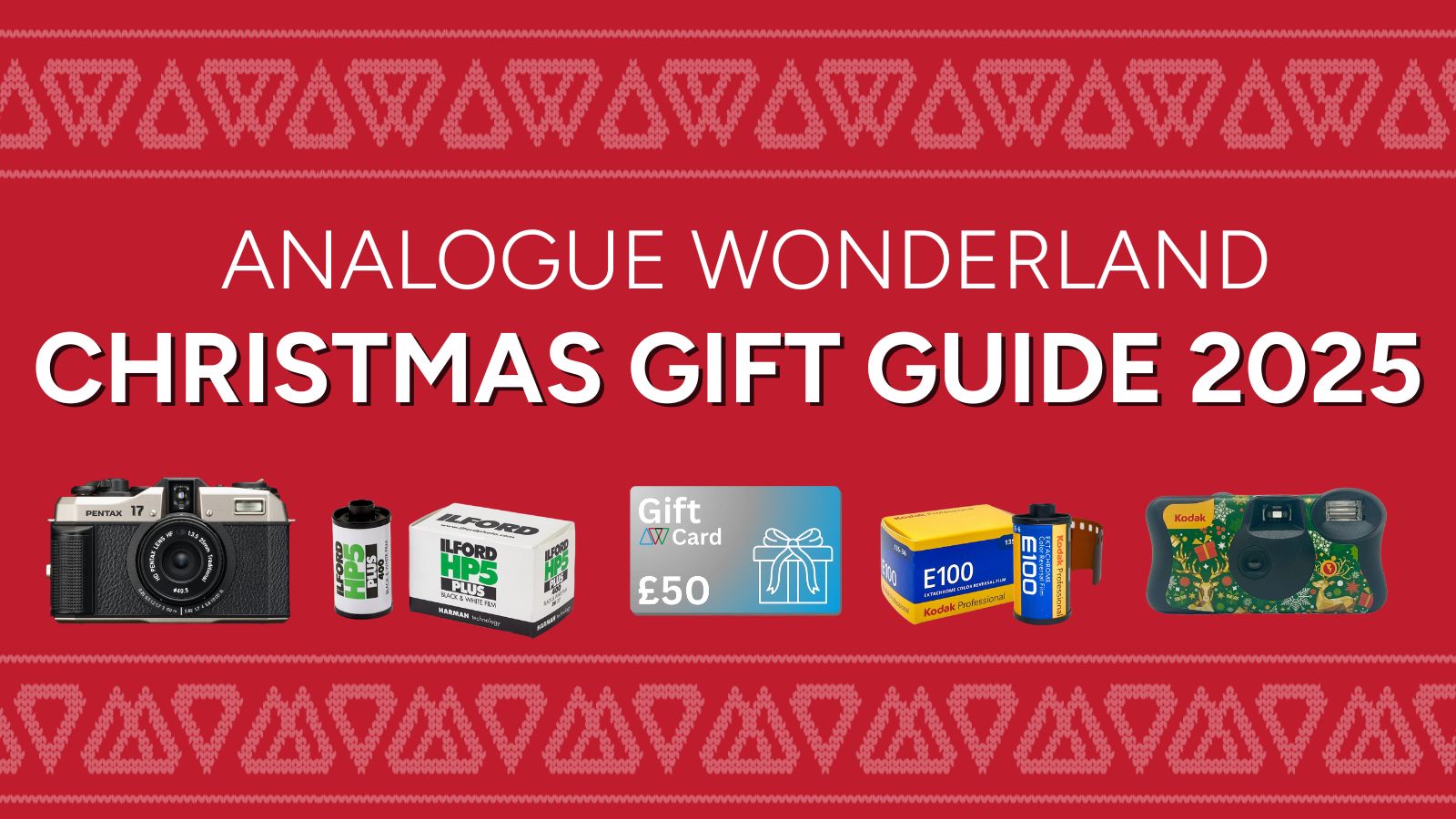
Film Photography Christmas Gift Guide 2025: Analogue Wonderland
Capture the magic of Christmas with film - no filters needed. Our 2025 Film Photography Christmas Gift Guide 2025 is packed with thoughtful presents for every type of shooter, from curious beginners to seasoned photographers. Discover film stocks, cameras, and creative accessories that will make this festive season truly memorable.
Subscribe to our newsletter 💌
Sign up for our newsletter to stay up to date on film photography news, sales and events:
Free Tracked Shipping
On all UK orders over £50
Passion For Film
An unbeatable range and an on-site lab
Our Customers Trust Us
Thousands of independent 5* reviews
All Deliveries are Carbon Neutral
Independently audited and verified by Planet
- Opens in a new window.




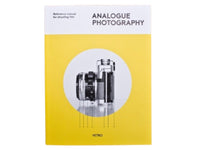

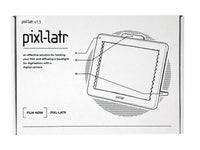

4 Comments -
conor hammond • -
Carol • -
Theo • -
Alleem Humber •
can i send kodachrome to be developed?
Hi!
Your article is great. I’m looking to buy a new 35 mm analog camera. I can’t find any. Do you have any suggestions? Thank you
@Alleem Humber
They are based in High Wycombe, in the UK – It does also state in this article that they are in the UK.
Where are you folks based USA or ???